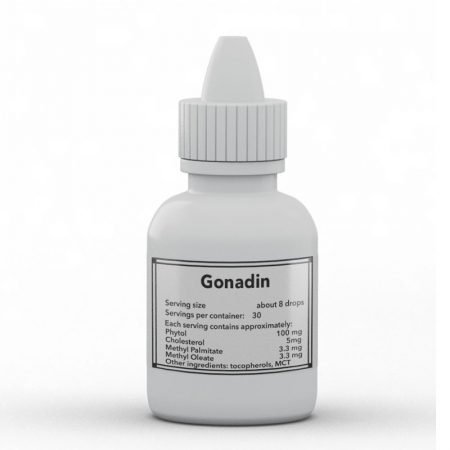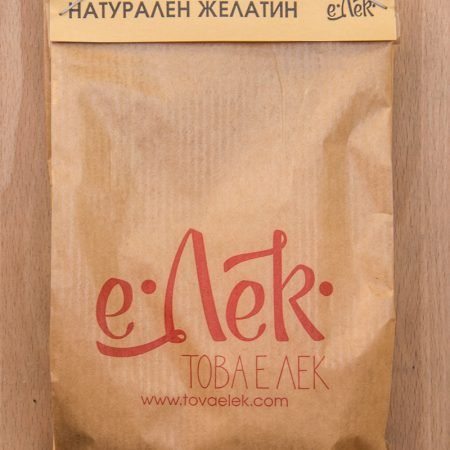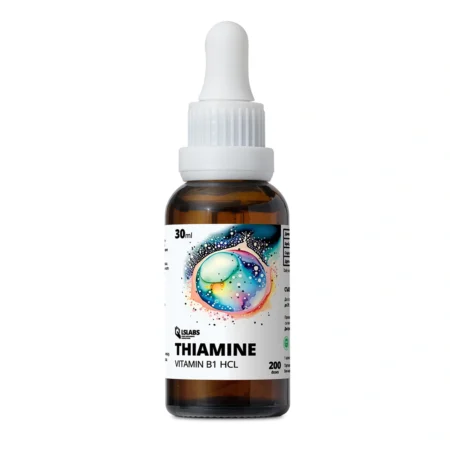Чисто ново проучване, което прави пряк паралел между възпалението, предизвикано от ПНМК, серотонина и депресията. Както показва проучването, високите нива на ПНМК арахидонова киселина (АА) са силно свързани с по-ниска плътност (експресия) на пренасяния серотонин (SERT, 5-HTT), като връзката всъщност е причинно-следствена и в двете посоки (АА<->серотонин). Това води до повишена наличност/ натрупване на серотонин, тъй като основната роля на SERT/5-HTT е да деактивира серотонина, използвайки натрий като кофактор.
https://en.wikipedia.org/wiki/Serotonin_transporter
“…The serotonin transporter (SERT or 5-HTT) also known as the sodium-dependent serotonin transporter and solute carrier family 6 member 4 is a protein that in humans is encoded by the SLC6A4 gene.[5] SERT is a type of monoamine transporter protein that transports serotonin from the synaptic cleft back to the presynaptic neuron.[6] This transport of serotonin by the SERT protein terminates the action of serotonin and recycles it in a sodium-dependent manner. This protein is the target of many antidepressant medications of the SSRI and tricyclic antidepressant classes.[7]”
Още по-лошото е, че проучването показва, че серотонинът и АА образуват положителен цикъл на обратна връзка, като повишеният серотонин, дължащ се на АА, инхибира SERT/5-HTT, води до активиране на ензима фосфолипаза А2 (PLA2), който синтезира АА от линолова киселина, което след това води до по-силно инхибиране на SERT/5-HTT и още по-висока наличност на серотонин. Макар че проучването се опитва внимателно да заобиколи ролята на серотонина в депресията и заявява, че в други проучвания са наблюдавани „противоречиви“ резултати, то с готовност признава, че АА е известен индуктор на депресия при животински модели. Е, ако АА е силно възпалителен депресант и образува положителна обратна връзка със серотонина, тогава не виждам как серотонинът би могъл да бъде антидепресант… Друг непосредствен извод от проучването е, че SSRI лекарствата са силно провъзпалителни, тъй като активират цикъла АА<->серотонин чрез инхибиране на SERT/5-HTT (което е основният им механизъм на действие). Като цяло, още една чудесна причина да избягвате ПНМК и да ядете много сол (на вкус).
https://www.sciencedirect.com/science/article/abs/pii/S0165032718330751
“…The relative peripheral levels of PUFA species are associated with neuropsychiatric illnesses, with elevated AA in proportion to DHA and EPA in MDD (Lin et al., 2010) and suicide risk (Huan et al., 2004; Lewis et al., 2011; Sublette et al., 2006). AA is particularly implicated in bipolar disorder, both postmortem (Kim et al., 2009) and in translational studies showing that multiple mood stabilizing medications downregulate AA metabolism (Rapoport, 2014).”
“…We have previously reported lower 5-HTT binding (BPP), using positron emission tomography (PET) and [11C]McN5652, in unmedicated MDD (Parsey et al., 2006a) and bipolar depressed (Oquendo et al., 2007a) groups compared with healthy controls. [11C]…We have reported lower [11C]DASB binding (VT/fP) in MDD patients with a history of suicide attempt (Miller et al., 2013), and lower binding potentials (BPF, BPP, and BPND, using a suboptimal reference region) in bipolar depression (Miller et al., 2016), considering a priori regions of interest (ROIs), although VT/fP did not differ in that study. ”
“…Separate models testing effects of DHA, EPA, and AA revealed no effects of DHA nor EPA on [11C]DASB binding potential (data not shown). However, AA had an effect on BPP (F = 9.14; df=1,19; p = 0.006) across regions, and given graphical evidence of a nonlinear relationship between AA level and BPP (Fig. 1A), we found that an added quadratic term was significant (F = 9.62; df=1,19; p = 0.006; also see Fig. 4, path a). The resulting inverted U-shaped relationship demonstrates that for most of the concentration range of AA, higher BPP correlated with lower AA levels. Exploratory analyses of PUFA effects on BPND and BPF (see Fig. 1B and C) similarly found that AA, but not DHA or EPA, demonstrated a comparable effect on BPND (F = 7.40; df=1,19; p = 0.014) while controlling for region, but had no statistically significant effect on BPF (F = 0.51; df=1,19; p = 0.484).”
“…Specifically, 5-HT2A/2C stimulates activation of cytosolic phospholipase A2 (cPLA2) (Berg et al., 1998; Qu et al., 2005; Garcia and Kim, 1997; Felder et al., 1990), triggering the release of unesterified AA from membrane phospholipids. Some of the released AA is recycled back into the membrane, a process that is stimulated by 5-HT1A receptors (Strosznajder et al., 1996). Remaining unesterified AA can decrease 5-HTT in certain brain regions (du Bois et al., 2006).”
“…Drs. Sublette, Mann and colleagues including Gregory Sullivan, M.D., a 2004 BBRF Young Investigator, discovered in their study that only one of the PUFAs they measured—AA, or arachidonic acid—had a potential impact on the availability of SERTs across the six brain areas that were imaged via PET scan. Specifically, they found that greater SERT availability in neurons correlated with lower AA levels in subjects, as measured in their plasma prior to the scans. This result led the team to hypothesize that AA may affect the severity of depression through its impact on the availability of SERTs in the brain. The nature of the observed correlation was complex, with extreme levels of AA affecting both SERTs and depression severity differently than moderate AA levels.”
Източник:
- Колко пресни портокала са ви необходими, за да изчистите черния си дроб от мазнини?Ако имате омазнен черен дроб, включването на пресни портокали в диетата ви може да ви помогне да възстановите здравето на черния си дроб. Това става ясно от малко италианско проучване. Италиански биохимици, свързани с Националния институт по гастроентерология – IRCCS Saverio de Bellis, набират 62 души с метаболитна дисфункция, свързана със стеатозна болест на черния… Read more: Колко пресни портокала са ви необходими, за да изчистите черния си дроб от мазнини?
- Хроничният стрес понижава допамина и причинява психични заболяванияДоказателствата за ролята на хроничния стрес в почти всички здравословни състояния, за които лекарите имат наименование, продължават да се трупат. За съжаление, дори в това последно проучване учените продължават да настояват, че има някаква мистериозна и неизмерима разлика между хроничния стрес, който „увеличава риска“ и „причинява“ патология. Същите тези учени обаче нямат проблем да заявят… Read more: Хроничният стрес понижава допамина и причинява психични заболявания
- Естрогенът и кортизолът, а не андрогените, потискат имунитетаВ биологията на възпроизводството има една много известна теория, която все още се смята за доминираща в тази област. А именно, че мъжете трябва да приемат баланса между нивата на андрогените и имунитета. Тя е известна като хипотеза за увреждане на имунната компетентност (ICHH). По-високите нива на андрогените, според теорията, позволяват на мъжкия да н(физически)… Read more: Естрогенът и кортизолът, а не андрогените, потискат имунитета
- Инхибирането на ароматазата (за намаляване на естрогена) може да доведе до лечение на рак на стомаха.Още едно проучване, което доказва причинно-следствената връзка между естрогена и рак, смятан за хормононезависим. Ракът на стомаха е една от водещите причини за смърт от рак в световен мащаб и особено в азиатските страни. Счита се, че е много труден за лечение и повечето пациенти се диагностицират в стадии, в които операцията не е подходяща.… Read more: Инхибирането на ароматазата (за намаляване на естрогена) може да доведе до лечение на рак на стомаха.
- Потиснатият имунитет, а не вирусите (HPV), може да е причина за рака на кожатаНаскоро публикувах няколко теми, свързани с имуносупресията и рака. Ето две от тях, които дават добър преглед и свързват имуносупресивните ефекти на ПНМК, естрогена и кортизола със защитните ефекти на витамин А, Е, D, прогестерона и др. https://xenobg.com/pnmk-sa-imunosupresivni-a-gladuvaneto-i-ogranichavaneto-na-proteinite-veroyatno-nanasyat-oshte-po-golyama-vreda/ https://xenobg.com/vitamin-d-mozhe-da-spre-rastezha-na-melanoma/ Въпреки натрупващите се доказателства, че именно потиснатата имунна система позволява на рака да се образува и… Read more: Потиснатият имунитет, а не вирусите (HPV), може да е причина за рака на кожата
- Витамин К може да лекува левкемияОще едно чудесно проучване, което демонстрира както терапевтичния потенциал на витамините, така и метаболитния/редокс характер на рака. Както споменах в някои от моите подкасти, витамин К2 (MK-4) понастоящем е в процес на клинични изпитвания за лечение/предотвратяване на редица различни видове рак, особено рак на черния дроб и т.нар. миелодиспластични състояния, които обхващат всички видове рак… Read more: Витамин К може да лекува левкемия
- Витамин D може да спре растежа на меланомаСтрахотно проучване, което потвърждава неотдавнашната ми публикация за това, че избягването на слънчевата светлина е толкова вредно за здравето, колкото пушенето на кутия цигари на ден. В края на краищата, без слънчева светлина няма да има голям синтез на витамин D, а допълнителният прием не е ефективен за много хора поради различни фактори, включително наднормено… Read more: Витамин D може да спре растежа на меланома
- Повишеният синтез на мастни киселини (FAS) е просто признак за недостиг на кислород / нисък метаболизъмСамо една бърза публикация за проучване, което дава представа за това как повишеното окисление на мастните киселини може „парадоксално“ да доведе и до повишен синтез на мастни киселини, като по този начин води до порочен кръг, който най-често се наблюдава при диабет и рак. В една от последните ми публикации се обсъждаше много по-ново проучване,… Read more: Повишеният синтез на мастни киселини (FAS) е просто признак за недостиг на кислород / нисък метаболизъм
- ПНМК са имуносупресивни, а гладуването и ограничаването на протеините (вероятно) нанасят още по-голяма вредаКакто споменах в един от първите подкасти с Дани Роди, ролята на ПНМК като имуносупресори всъщност е добре позната в индустрията за трансплантации на органи. В някакъв момент през 80-те години на миналия век дори е имало търговски продукт на основата на ПНМК, продаван на болниците като част от така нареченото решение за „пълно парентерално… Read more: ПНМК са имуносупресивни, а гладуването и ограничаването на протеините (вероятно) нанасят още по-голяма вреда
- Хората имат подобна на саламандър способност да възстановяват хрущялиЗаглавието говори само за себе си, но авторите на проучването правят злощастното и неудачно заключение, че макар и да можем да възстановим хрущяла, не можем да възстановим крайниците си. Е, многобройните изследвания върху животни, които публикувах в последния материал, не са съгласни с това и сочат както високия метаболизъм, така и прогестерона като мощни регенеративни… Read more: Хората имат подобна на саламандър способност да възстановяват хрущяли











